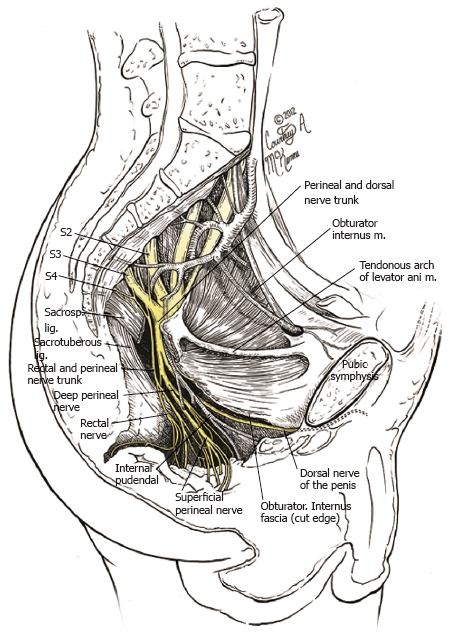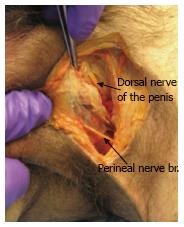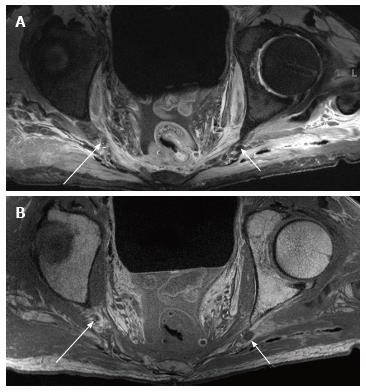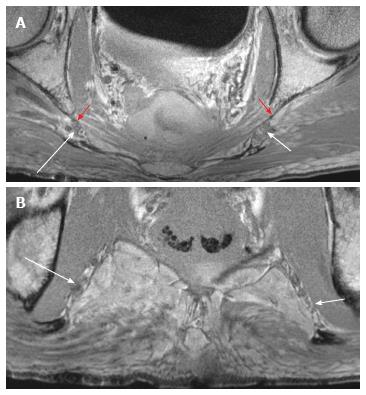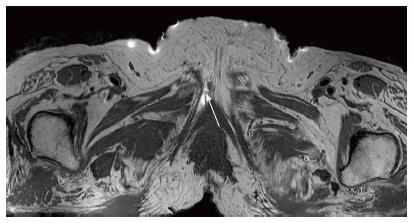Copyright
©The Author(s) 2016.
World J Radiol. Jul 28, 2016; 8(7): 700-706
Published online Jul 28, 2016. doi: 10.4329/wjr.v8.i7.700
Published online Jul 28, 2016. doi: 10.4329/wjr.v8.i7.700
Figure 1 Illustration showing the normal pelvic course of the pudendal nerve and its branches.
Figure 2 Male pelvis block in supine position.
The dorsal nerve of the penis and the perineal nerve are identified during the surgical dissection.
Figure 3 Female pelvic block- premarking.
Axial T2W SPAIR (A) and T1W (B) images show the right (large arrows) and left (small arrows) pudendal nerves at the ischial spine.
Figure 4 Female pelvic block- premarking.
Oblique sagittal reconstruction from 3D DW PSIF sequence shows the pudendal nerve branching as it exits at the sacrospinous ligament (arrows).
Figure 5 Male pelvic block-premarking.
Contiguous axial T1W images show the right (large arrows) and left (small arrows) pudendal nerves at the ischial spine (A) and Alcock’s canal (B). Corresponding coronal T1W image (C) shows suboptimal identification of the nerves (arrows) in the Alcock’s canal. Block arrows - sacrospinous ligaments.
Figure 6 Female pelvis block-post marking.
Identification of marker (arrow) placed in female pelvis block at distal end of inferior pubic ramus canal around dorsal nerve to the clitoris. Contralateral nerve is not well seen.
Figure 7 Male pelvis block-post marking.
A: Identification of the marker (arrow) placed in the male pelvis block under the dorsal nerve of the penis. Contralateral nerve is not well seen; B: Identification of the marker (arrow) placed in the male pelvis block around the perineal nerve. Contralateral nerve not identified.
- Citation: Chhabra A, McKenna CA, Wadhwa V, Thawait GK, Carrino JA, Lees GP, Dellon AL. 3T magnetic resonance neurography of pudendal nerve with cadaveric dissection correlation. World J Radiol 2016; 8(7): 700-706
- URL: https://www.wjgnet.com/1949-8470/full/v8/i7/700.htm
- DOI: https://dx.doi.org/10.4329/wjr.v8.i7.700









